3 Ways Heat Will Affect Apple Picking Season This Fall, Warn Farmers
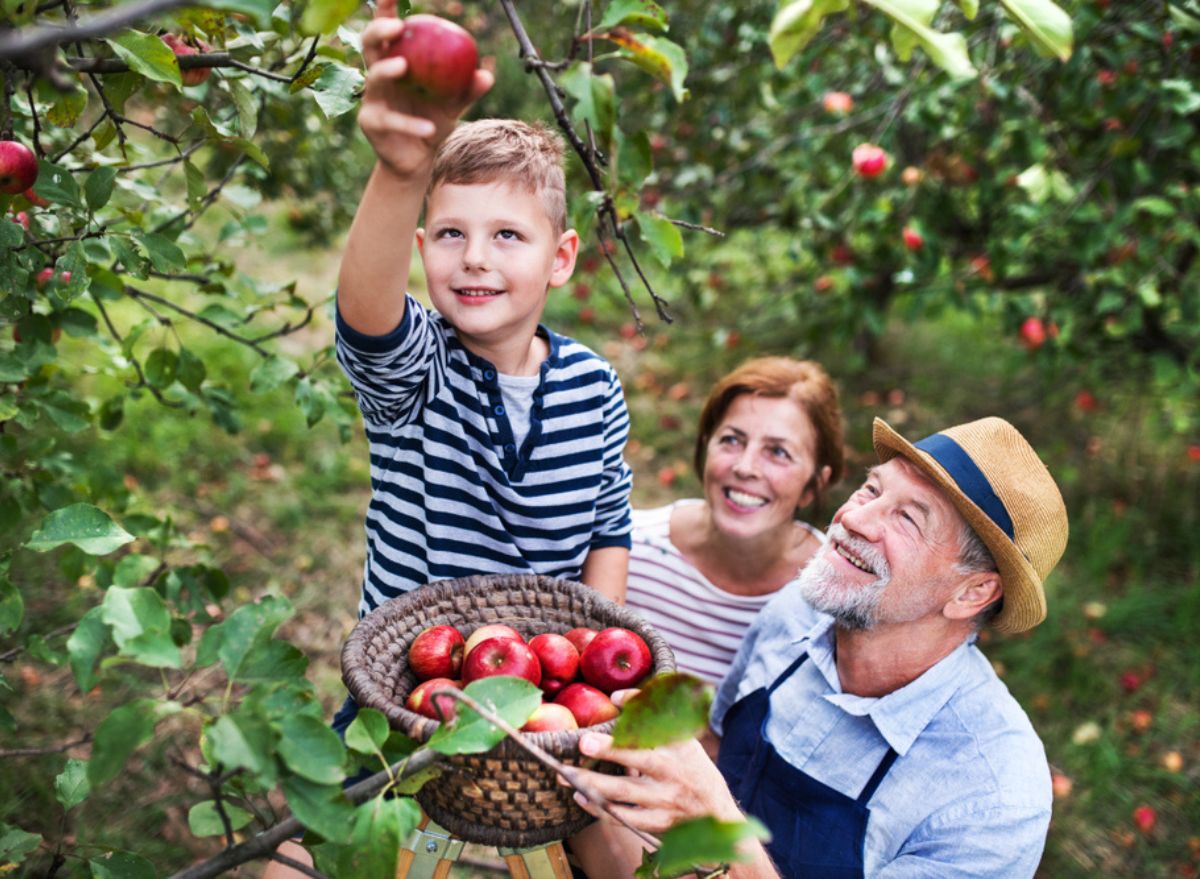
It's official—summer is finally coming to an end and fall is just beginning. That means it's finally time for pumpkin spice lattes, watching the leaves change colors, and, of course, apple season. But will this summer's excessive heat and lack of rain affect the apple crop and impact apple picking season? Farmers warn there could be marked differences.
Not only are apples the most consumed fruit in the U.S. (closely followed by oranges), but American farmers produce an average of 240 million bushels of apples each year, the Agricultural Marketing Resource Center (AgMRC) reported. Unfortunately, mother nature may have different plans for apples this year, as troubling drought conditions have hit the U.S. in record numbers.
It's been a very hot and dry summer, with a big lack of rainfall, and "it's really tough on the crops," says David Butler, long-time farmer and the owner of Sky Top Orchard. "We're very fortunate we have a full crop this year," he says, however, "we have noticed quite a few customers are coming to us because some orchards on the East Coast haven't faired as well."
Farmers and orchard owners have had to rely mainly on irrigation systems to maintain their apple trees, so far this year. But even with certain adjustments, Butler says, "quality goes down." Due to the fact that "it's been awfully hot in many zones," he explains, "when it gets above 90 [degrees] and the fruit is ripening, it's very hard on it."
Read on to find out what this sweet, juicy fruit is going to look like, possibly taste like, and some tips for your next apple picking extravaganza.
Apples might be smaller
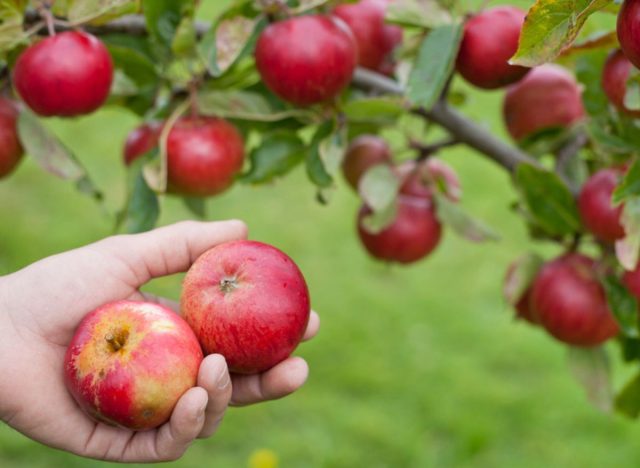
Although there has been much less rainfall across the board, the amount of apples being grown hasn't seen a dip, as the proportions of the fruit have. "Our crop size, quantity-wise, looks great," says Alison Jaswell, co-owner and farmer of Jaswell's Farm. On the other hand, "you may notice that the actual size may be a bit smaller than you've seen in years past," she explains.
Growing apples is a year-round operation, Jaswell says, and the fruit can require up to about 20 inches (1.7 ac-ft) of water during the growing process. While weather conditions have recently played a part in whether or not an apple will be bigger than the palm of your hand this season, "size can vary year to year regardless," she says.
Outside of the environment, the sizing of apples can be a result of many factors, such as fertilizer, crop load (how many apple trees and their distance between each other), and even, the genetics of the fruit itself.
The could be sweeter depending on the variety
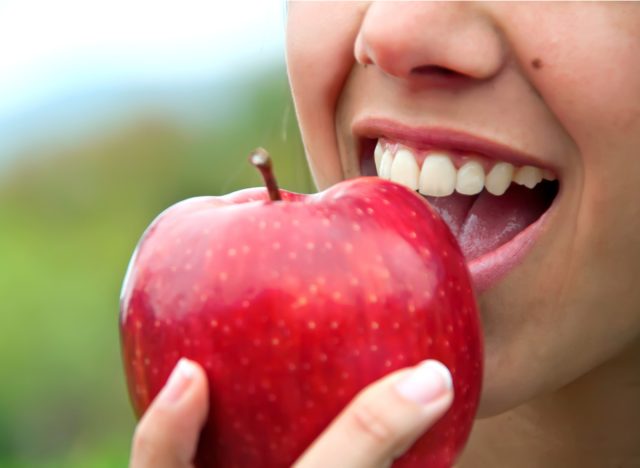
You may wonder now that if apples are going to be on the smaller side this year, will their taste of them be affected too? The short answer is: not necessarily.
"Sometimes with a smaller size you have more concentration of flavor," Jaswell explains, but in most cases, "flavor is relatively consistent. I find more variation in flavor and taste with variety." Depending on the type of apple you choose—such as Fuji compared to Pink Lady—the sweetness or tartness will change.
One study found that when apples experience pre-harvest drought stress, some have higher antioxidant activity and an increased sugar concentration (in sugar apple fruit). Which in simple terms, means apples may tend to be even more potent in flavor, either extremely sweet or acidic.
Overall, taste may just be up for debate, since ultimately your taste buds will decide if this year's apples adapted to a flavor of your liking.
Too much sun can change the texture of apples and shorten their lifespan
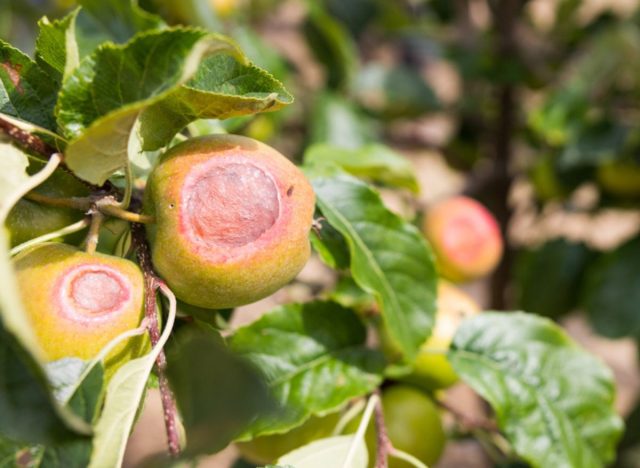
Keep in mind, "heat is not your friend in harvest," Butler claims. So while the proportion of apples this year may not drastically alter your favorite flavors, the heat could create a different texture outcome.
Being indirect sunlight for too long isn't good for most all produce, but for apples specifically, "it can actually burn the skin. Like how you'd get a third-degree sunburn, [the sun] will do that to apple skins," Butler explains. A sunburnt apple may wilt, have yellow spots or leaves, and/or scorched edges that are brown and dry to the touch.
Another downfall of apples being in extreme heat is a forceful turnover. "You have to use them quicker and the quality's less." Butler says, "you may lose more to rot." The lifespan of apples lessens from the stress of heat, and in turn, they won't last as long after being picked.
What to look out for when harvesting (apple picking season!)
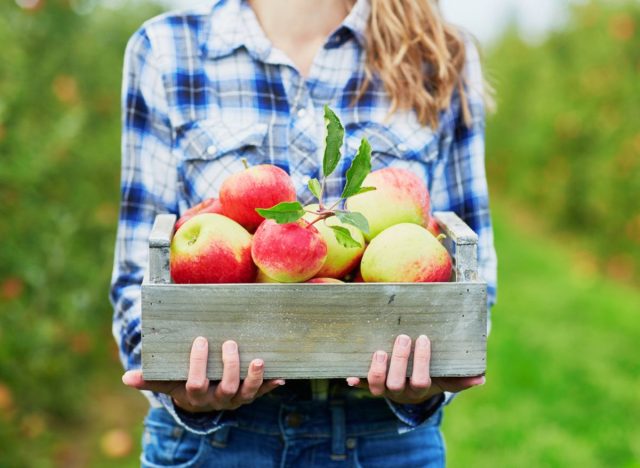
Not to worry, this can still be a great season for picking apples! It's a wonderful experience that people of all ages can participate in and at the end of the day you want to "plan to have fun," Jaswell says.
The first step, be sure to "wear the proper clothing, proper shoes, be ready for changeable weather," recommends Butler. Coming physically prepared to the farm or orchard will help your apple picking go smoothly and safely.
Also, "it's always best to come early, for best selection," Jaswell explains, "the later you wait in the season, the less of a chance of you getting and having more options available to you." Considering the fact that prime harvesting season only lasts between six to eight weeks, you want to pick apples in their ripest form, and possibly before other eager pickers get to the good ones first!
According to Butler, "as far as selection, we try to tell people to select them as far as color and quality." As you stroll through the rows of apple trees, you can touch and feel the toughness and see how bright the fruit is turning before you decide whether or not to pick it.
You can also "sample before you go out, make sure it's a variety you want." Whether you enjoy Gala, Honey Crisp, or even Red Delicious, the trees are sectioned accordingly and you'll want to know what your favorite is before heading out on a spontaneous picking spree.
Lastly, it's important to note as you're out on the fields, "once you pick it, we want you to keep it, not throw it on the ground." This is a common problem that many U-Pick orchards and farms have, but it can very wasteful when it comes to such sensitive produce (apples included).









